Have you ever wondered if some people possess a hidden ability to perceive the world in ways beyond the ordinary? This is the core question behind the study of esp, or extrasensory perception. For decades, this phenomenon has fascinated scientists, researchers, and curious minds alike.
Early experiments, like those conducted by J.B. Rhine using Zener cards, laid the groundwork for understanding this mysterious topic. These studies aimed to explore whether certain individuals could access information through unconventional channels. While the results remain debated, they sparked a lasting interest in the field of parapsychology.
Today, the enigma of esp continues to challenge our understanding of human potential. Whether it’s through historical accounts or modern research, the idea that a person might have untapped abilities remains both intriguing and controversial. Join us as we dive deeper into this captivating subject, exploring its history, cultural impact, and ongoing scientific investigations.
Key Takeaways
- ESP explores the possibility of hidden human abilities beyond the five senses.
- Early experiments, like J.B. Rhine’s work, laid the foundation for modern research.
- The topic remains a blend of fascination and scientific debate.
- Historical and cultural perspectives add depth to the understanding of ESP.
- Modern studies continue to investigate the potential of human perception.
Introduction to the Psi Phenomenon
Is it possible for humans to gather information without relying on their five senses? This question lies at the heart of the psi phenomenon, a term used to describe abilities that go beyond ordinary perception. Often referred to as ESP, this concept has sparked both fascination and skepticism for decades.
At its core, the psi phenomenon challenges our understanding of how we interact with the world. While science relies on observable facts, ESP suggests that some individuals might access knowledge through unconventional means. This idea has led to heated debates, with some viewing it as a groundbreaking discovery and others dismissing it as a misinterpretation of natural events.
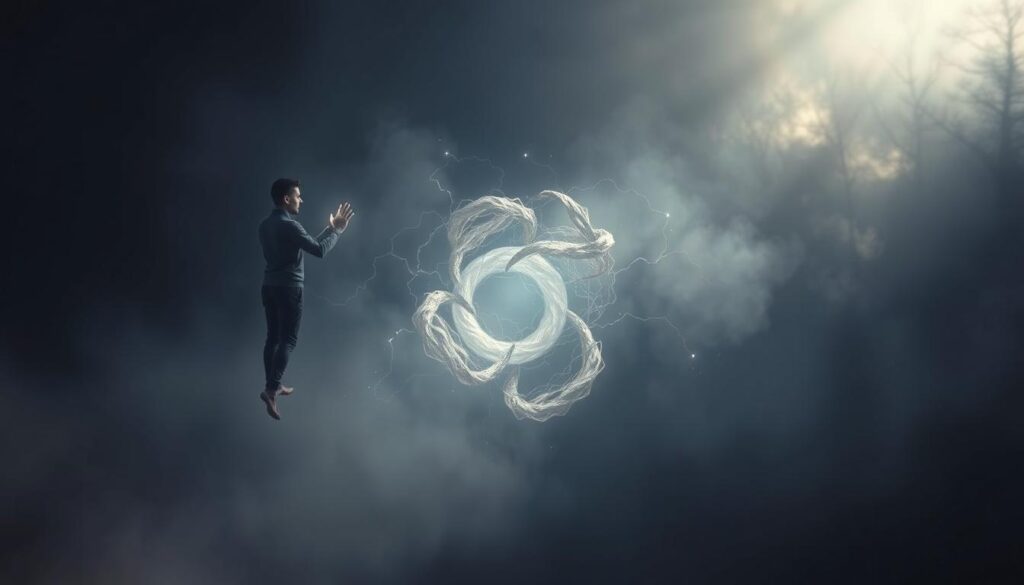
Historically, the concept of ESP has been intertwined with cultural beliefs and folklore. From ancient tales of clairvoyance to modern claims of telepathy, the idea of perceiving the unseen has always captured the human imagination. However, this fascination has also led to a problem: separating genuine phenomena from anecdotal stories and wishful thinking.
Understanding the basics of the psi phenomenon is crucial for exploring its potential. As we delve deeper into experiments and research, it’s important to approach the topic with an open mind while maintaining a critical perspective. After all, the line between extraordinary ability and human error can be surprisingly thin.
To learn more about ESP studies, visit our detailed guide. Whether you’re a skeptic or a believer, the psi phenomenon invites us to question the limits of human perception and explore the unknown.
The Origins and History of Extrasensory Perception
The idea of perceiving the unseen has roots deep in human culture and history. Stories of individuals with extraordinary abilities, often referred to as second sight, have been passed down through generations. These tales laid the groundwork for what we now call ESP.
Early researchers questioned the existence of such abilities. Some individuals claimed to use their mind to predict future events, a phenomenon known as precognition. These claims sparked curiosity and debate among scientists and psychologists.

In the early 20th century, the study of ESP moved from folklore to the laboratory. Duke University became a hub for experimental research. Researchers aimed to test whether these abilities were real or simply a product of the human imagination.
The condition of early psychology played a significant role in shaping the study of ESP. Debates about the nature of consciousness and perception fueled interest in this field. Landmark studies brought ESP into public awareness, blending science with mystery.
Here’s a timeline of key events in the history of ESP:
| Year | Event |
|---|---|
| 1930s | J.B. Rhine begins ESP experiments at Duke University. |
| 1960s | ESP gains popularity in mainstream culture. |
| 1970s | Ganzfeld experiments introduce new methodologies. |
| 1990s | Meta-analyses attempt to validate ESP findings. |
From ancient folklore to modern science, the journey of ESP reflects humanity’s enduring fascination with the unknown. While skeptics and believers continue to debate, the history of ESP remains a captivating chapter in the study of human potential.
Early Laboratory Experiments and Zener Cards
The quest to validate extraordinary abilities began in the laboratory. Early researchers aimed to test whether humans could access information beyond the five senses. These experiments laid the foundation for modern study in this field.

One of the most notable figures in this research was J. B. Rhine. At Duke University, Rhine conducted thousands of tests using Zener cards. These cards, featuring five distinct symbols, became a key tool in exploring the phenomenon of psychic abilities.
J. B. Rhine’s Pioneering Work
Rhine’s experiments were groundbreaking. He tested participants’ ability to guess the symbols on Zener cards. The results were intriguing. Some individuals scored significantly higher than chance, suggesting potential evidence of extraordinary abilities.
For example, one student correctly guessed 25 consecutive cards. This outcome, with odds of 1 in 298 quadrillion, sparked both excitement and skepticism. Rhine’s work brought the study of psychic abilities into the scientific spotlight.
Innovative Experiment Designs
Rhine’s methods were innovative for their time. He used controlled conditions to minimize external influences. This approach aimed to ensure that results were not due to luck or trickery.
Here’s a breakdown of the Zener card experiment process:
| Step | Description |
|---|---|
| 1 | Shuffle a deck of 25 Zener cards. |
| 2 | Ask the participant to guess the symbol on each card. |
| 3 | Record the number of correct guesses. |
| 4 | Compare results to chance expectations. |
While some findings were remarkable, critics questioned the methodology. Issues like participant bias and statistical anomalies were raised. These debates continue to shape the field today.
The Ganzfeld Experiment: Procedures and Findings
The Ganzfeld experiment offers a unique window into the mysteries of the mind. Designed to test extraordinary abilities, this method uses sensory deprivation to create a controlled environment. By isolating participants from external stimuli, researchers aimed to measure their sense of perception beyond the ordinary.
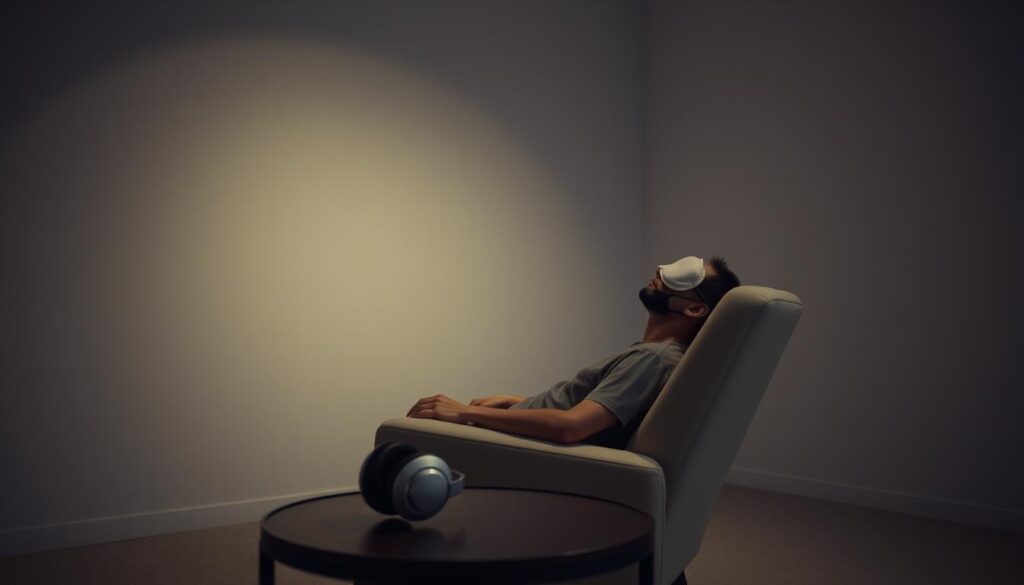
In its early stages, the experiment involved covering participants’ eyes and ears to block out sensory input. This form of isolation was believed to enhance their ability to receive information through unconventional means. Participants were then asked to describe images or thoughts that came to mind, which were compared to a target image selected by researchers.
Initial Methodologies and Results
The first Ganzfeld experiments yielded intriguing results. Some participants demonstrated accuracy rates significantly higher than chance. For example, early studies reported a hit rate of 35%, suggesting a potential effect of sensory deprivation on perception. These findings sparked excitement and debate within the scientific community.
However, critics questioned the methodology. Issues like participant bias and statistical anomalies were raised. Despite these challenges, the Ganzfeld experiment became a cornerstone in the study of extraordinary abilities.
Evolving Protocols and the Auto-Ganzfeld
As technology advanced, so did the Ganzfeld experiment. The introduction of the auto-ganzfeld procedure brought greater precision to the process. Automated systems were used to select target images and record responses, reducing human error and improving reliability.
Here’s a comparison of the traditional and auto-ganzfeld methods:
| Aspect | Traditional Ganzfeld | Auto-Ganzfeld |
|---|---|---|
| Target Selection | Manual | Automated |
| Response Recording | Human Observation | Digital Systems |
| Accuracy | Prone to Bias | Enhanced Precision |
These advancements have shaped the future of ESP research. While skepticism remains, the Ganzfeld experiment continues to inspire new studies and methodologies. It serves as a reminder of humanity’s enduring curiosity about the unknown.
Skepticism, Criticism, and Scientific Reception
Why do many scientists remain unconvinced about extraordinary abilities? The study of these phenomena has faced significant skepticism due to methodological flaws and challenges in reproducibility. While some experiments have yielded intriguing results, the scientific community often questions their validity.

One major issue is the potential for chance successes. In many studies, the result could be attributed to random probability rather than genuine ability. Critics argue that without rigorous controls, it’s difficult to draw definitive conclusions.
Methodological Flaws and Reproducibility Issues
Another concern is the difference in experimental conditions. Variations in setup, participant selection, and data analysis can lead to inconsistent outcomes. For example, sensory leakage—where unintended cues influence the individual’s response—has been a recurring problem in ESP research.
Here are some key challenges identified by critics:
- Lack of standardized protocols across studies.
- Failure to replicate positive findings in subsequent experiments.
- Overreliance on anecdotal evidence rather than empirical data.
The experience of the experimenter also plays a role. Differences in training and interpretation of results can introduce bias, further complicating the validation process. These factors highlight the inherent difficulties in studying phenomena that defy conventional scientific explanations.
Despite these challenges, the debate continues. While some researchers advocate for more rigorous methodologies, others remain skeptical about the very existence of such abilities. This ongoing discussion underscores the importance of critical thinking and open-mindedness in scientific inquiry.
Cultural Impact and the Folklore of Second Sight
Throughout history, tales of second sight have captivated cultures worldwide. Often referred to as “the two sights,” this phenomenon blends ordinary vision with glimpses of the unseen. From ancient folklore to modern literature, second sight has shaped beliefs about the mysterious and the unknown.
In Scotland, second sight, or dà shealladh, has deep roots. Gaelic traditions describe it as an involuntary ability to foresee events. For example, a Highland gentleman reportedly saw his brother without a head 24 hours before the brother’s execution. Such stories highlight how cultural narratives interpret chance encounters as evidence of extraordinary abilities.
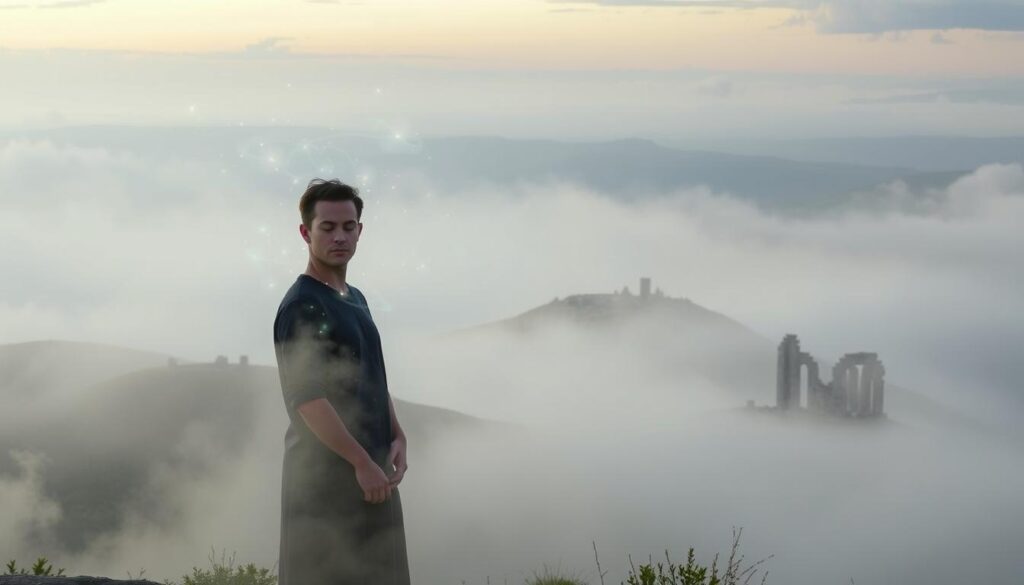
Historical accounts reveal common symbols associated with second sight. These include the shroud, the corpse-candle, and specific causes of death like drowning or hanging. A late 17th-century minister near Inverness noted that seers could foresee “murders, drownings, marriages, and burials.” These visions were often seen as troublesome, with many wishing to be rid of the ability.
Here’s a look at conditions conducive to experiencing second sight:
| Condition | Description |
|---|---|
| After dusk | Visions were more likely in low light. |
| Across a fire | Firelight was believed to enhance the ability. |
| Following a death | Sudden or violent deaths triggered visions. |
| When a friend is ill | Illness often prompted second sight experiences. |
Literary depictions have also played a role in shaping public perceptions. Sir Walter Scott’s The Two Drovers and other Romantic-era works celebrated second sight as a blend of intuition and imagination. These stories reinforced the idea that some individuals possess a unique connection to the unseen.
Modern parapsychology has both challenged and reinforced these folklore traditions. While scientific experiments aim to validate psi phenomena, cultural beliefs continue to influence how people interpret extraordinary experiences. This blend of myth and science invites us to explore the limits of human understanding.
Modern Research and the Digital Era of ESP Studies
How has technology reshaped the study of extraordinary abilities? The digital era has brought significant advancements to ESP research, refining methods and improving measurement rigor. From traditional experiments to modern online studies, the field has evolved to address long-standing challenges.

Advances in Experimental Rigor
One of the most notable improvements is the auto-ganzfeld procedure. This automated system reduces human error by selecting target images and recording responses digitally. Such advancements have enhanced the precision of experiments, making them more reliable.
Online studies have also expanded the scope of research. By reaching a broader audience, scientists can gather more diverse data. This shift has allowed for larger sample sizes and more robust statistical analysis, addressing some of the limitations of earlier methods.
Challenges in Replication
Despite these advancements, replication remains a significant hurdle. Many promising results from early studies have failed to be consistently reproduced. This issue raises questions about the validity of findings and the theory behind ESP.
For example, Daryl J. Bem’s widely discussed experiments yielded intriguing results but faced criticism for methodological flaws. The scientific community has emphasized the need for rigorous controls and transparent reporting to ensure credibility.
Here’s a comparison of traditional and modern ESP research methods:
| Aspect | Traditional Methods | Modern Methods |
|---|---|---|
| Data Collection | Manual | Automated |
| Sample Size | Limited | Expanded |
| Replication Rate | Low | Improving |
Modern science continues to explore the boundaries of human potential. While skepticism persists, the digital era offers new tools to investigate these phenomena. As research evolves, the hope is to uncover clearer answers about the nature of extraordinary abilities.
The Role of Cognitive Styles and Belief Systems
What shapes our understanding of extraordinary abilities? Research shows that cognitive styles and belief systems play a key role. These factors influence how people interpret and experience phenomena beyond the ordinary.

Rational Versus Intuitive Thinking
People approach extraordinary claims in two main ways: rational and intuitive. Rational thinkers rely on evidence and logic. They often question claims that lack scientific backing. Intuitive thinkers, on the other hand, trust their feelings and experiences. They are more open to the idea of hidden abilities.
For example, a psychologist might study how these thinking styles affect belief in ESP. One study found that intuitive thinkers were more likely to accept extraordinary claims. Rational thinkers, however, remained skeptical unless presented with concrete proof.
How Belief Influences ESP Perception
Belief systems also shape how people perceive extraordinary phenomena. Those who believe in ESP are more likely to interpret random events as meaningful. For instance, seeing a specific object in a dream might be seen as a sign of precognition.
Research highlights how belief can influence perception. In one experiment, participants were shown ambiguous images. Those who believed in ESP were more likely to see hidden meanings. This shows how belief can shape our understanding of the world.
Here’s a comparison of cognitive styles and their impact on belief:
| Cognitive Style | Approach to ESP |
|---|---|
| Rational | Seeks evidence, remains skeptical |
| Intuitive | Trusts feelings, open to possibilities |
Understanding these differences helps explain why people interpret extraordinary phenomena in unique ways. Whether you’re a skeptic or a believer, cognitive styles and beliefs play a significant role in shaping your perspective.
Notable Studies and Meta-Analysis Overviews
What do the numbers say about the validity of extraordinary abilities? Over the years, researchers have conducted numerous experiments and meta-analyses to explore this question. These studies have aimed to uncover whether phenomena like telepathy and precognition are real or simply the result of chance.

One of the most comprehensive reviews analyzed 16 experiments with over 21,000 trials. The findings revealed that 75% of these experiments showed a significant effect on participants’ probability of correct responses. However, the effect sizes were often small, ranging from 0.01 to 0.5. This suggests that while some results are intriguing, they may not be strong enough to confirm extraordinary abilities definitively.
Comparative Findings from Key Experiments
Different studies have used various methods to test extraordinary abilities. For example, some experiments used card-guessing settings, while others focused on telephone telepathy. The success rates varied widely, from 21.7% to 55.2%, depending on the design and conditions of the experiment.
Here’s a comparison of key findings from notable studies:
| Experiment Type | Success Rate | Effect Size |
|---|---|---|
| Card-Guessing | 25% | 0.15 |
| Telephone Telepathy | 35% | 0.20 |
| Precognition Tests | 30% | 0.10 |
Despite these results, critics argue that many experiments suffer from methodological flaws. Issues like participant bias and small sample sizes can affect the reliability of the findings. This has led to ongoing debates about the validity of extrasensory perception research.
Meta-analyses have attempted to address these concerns by aggregating data from multiple studies. For example, one review calculated an overall weighted effect size of 0.091. While this suggests a slight trend, it’s not enough to provide a definitive explanation for extraordinary abilities.
As the series of studies continues, researchers are refining their methods to improve accuracy. The hope is that future experiments will provide clearer answers about the nature of these phenomena. Until then, the debate remains open, inviting both skeptics and believers to explore the unknown.
Parapsychology and Pseudoscience: Understanding the Debate
The debate between parapsychology and mainstream science has sparked intense discussions for decades. While some researchers argue for the existence of extraordinary abilities, others dismiss these claims as pseudoscience. This section explores the critiques, rebuttals, and the complexity of this ongoing debate.
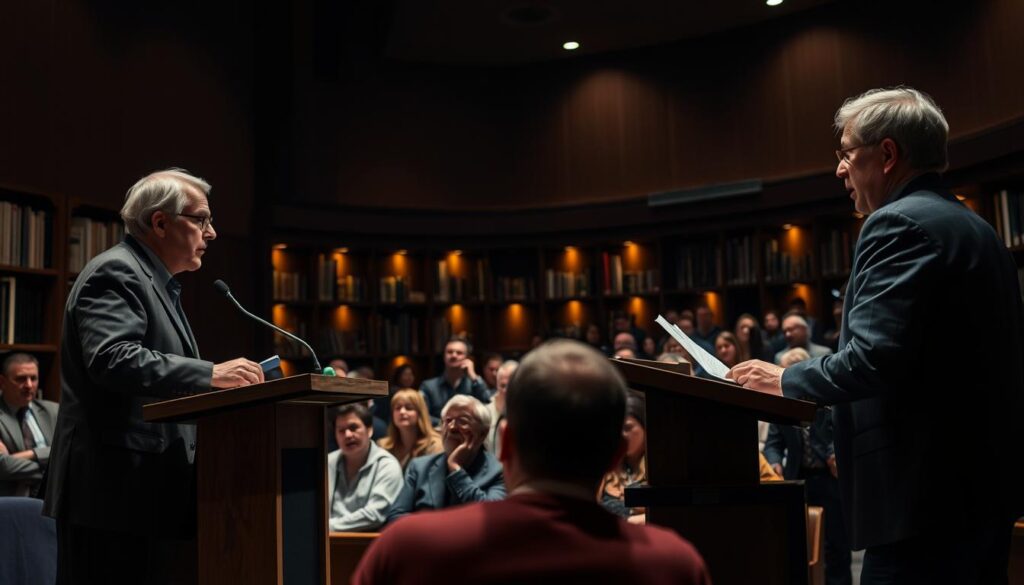
Scientific Critiques and Rebuttals
Mainstream scientists often question the validity of parapsychology. One major critique is the lack of reproducibility in experiments. For example, while early ganzfeld experiments showed a hit rate of 35%, later studies failed to replicate these results consistently. Critics argue that such inconsistencies undermine the credibility of ESP claims.
Another concern is the potential for fraud or bias. In some cases, participants may unconsciously influence results, or researchers may misinterpret data. These issues highlight the challenges of studying phenomena that defy conventional scientific explanations.
Despite these critiques, parapsychologists have offered rebuttals. They argue that the small effect sizes in their studies are still significant. For instance, a meta-analysis of 40 studies reported an average hit rate of 30.1%, suggesting a potential trend. However, skeptics remain unconvinced, calling for more rigorous methodologies.
Support from Renowned Researchers
Not all scientists dismiss parapsychology outright. Some renowned researchers have lent their support to ESP claims. For example, Daryl J. Bem’s experiments on precognition sparked widespread interest, even though they faced criticism for methodological flaws. These studies have encouraged further exploration into the limits of human perception.
Belief in extraordinary abilities also plays a role in shaping research. Studies suggest that individuals who believe in ESP are more likely to interpret random events as meaningful. This belief can influence both the design and interpretation of experiments, adding another layer of complexity to the debate.
Ultimately, the discussion around parapsychology invites us to question the boundaries of science. Whether you’re a skeptic or a believer, the debate highlights the importance of critical thinking and open-mindedness. To learn more about ESP studies, visit our detailed guide.
Implications for Future Research and Psychological Theories
What lies ahead for the study of extraordinary abilities? As modern research continues to refine its methods, the field is poised for exciting developments. Evolving theoretical perspectives are challenging traditional notions of consciousness, opening doors to new possibilities.
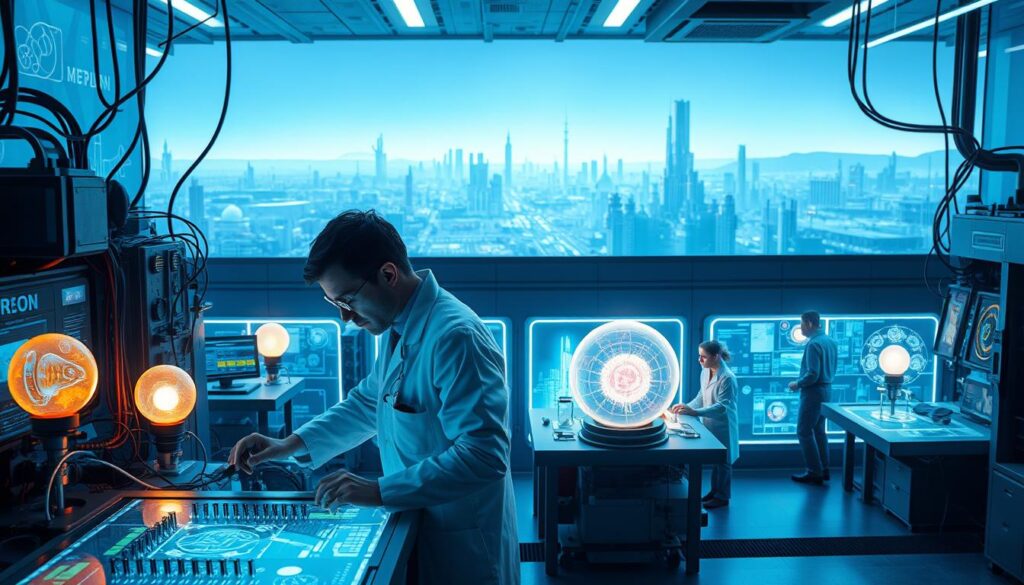
Evolving Theoretical Perspectives
Psychological theories are shifting to accommodate new findings. For example, recent studies suggest that belief in ESP can influence how people interpret their experiences. This highlights the importance of self-awareness in understanding extraordinary claims.
Research also emphasizes the need for nuanced analysis. With advancements in digital tools, scientists can now conduct more precise experiments. These innovations are helping to address long-standing skepticism and improve the reliability of results.
Potential for Breakthrough Discoveries
The future holds promise for groundbreaking discoveries. As methodologies improve, researchers are uncovering small but intriguing effects. For instance, a recent survey found that 60% of participants in the U.S. believe in ESP, indicating widespread interest in the topic.
This growing curiosity, combined with technological advancements, could lead to significant breakthroughs. By fostering open-mindedness and rigorous research, the field is moving closer to understanding the mysteries of human potential.
Conclusion
Exploring the mysteries of human potential has always been a fascinating journey. From early lab experiments to modern digital studies, the research into extraordinary abilities has evolved significantly. While skepticism remains strong, the debate continues to inspire new theoretical frameworks and methodologies.
This field challenges our understanding of psychology and consciousness. It invites us to question the limits of human perception and remain open to possibilities. The cultural impact and historical roots of these phenomena add depth to the ongoing discussion.
As we look to the future, advancements in technology and research methods offer hope for clearer answers. Whether you’re a skeptic or a believer, the study of these abilities encourages critical thinking and curiosity. Let’s continue to explore the unknown with an open mind and a sense of wonder.

